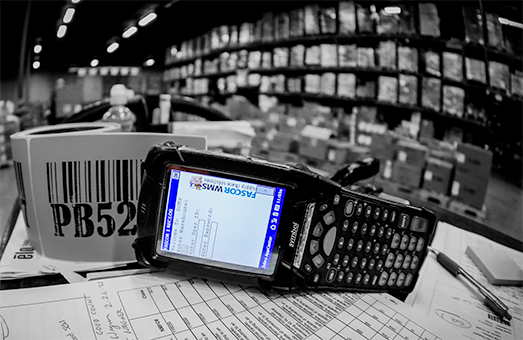Each scan of the bar code, each click of the mouse, and each push of the button says something about your business. Tools, technologies, systems, and personnel throughout practically any business are generating data at an unprecedented clip. As a result there is more information available than at any time in history; and this means more opportunity to leverage technologies, streamline operations, boost efficiency, and accelerate productivity. So what’s the best way to manage this broad spectrum of information within your supply chain?
ERP has its Place
Today’s Enterprise Resource Planning (ERP) systems are capable of handling vast amounts of data. And while not specifically designed to operate within the supply chain realm these systems are generally adequate for smaller, low volume distributors. But as companies grow, those in warehousing, distributing, manufacturing, and other supply chain-driven industries will need to replace or enhance ERP capabilities with a Warehouse Management System (WMS).
Just as ERP systems were created to operate within the world of finance, a WMS is specifically designed to handle the types and volume of data being generated throughout supply chain and/or manufacturing processes. Sales, order fulfillment, shipping, replenishment, inventory, tracking, manufacturing raw materials and beyond, are all areas of the operation must be tightly integrated as part of a complete supply chain management strategy. A WMS drives responsiveness and supports critical decisions with the most up-to-date and accurate information. This in turn synergizes the entire operation turbo-charging efficiency, productivity, and ultimately improving the bottom line.
In today’s world warehouse, distribution, and transportation management systems are affordable for virtually any size company and offer various levels of functionality to meet varying needs including your unique requirements. Fortunately for smaller to mid-size businesses a WMS doesn’t need to break the bank. Now even modest sized companies can get the same results as their Tier 1 counterparts without spending millions. If you have already deployed an ERP system, a WMS leverages the strengths of each to deliver a truly automated and responsive distribution environment. The result is a clear, accurate, and on-demand view of the complete operation.
Integrating the Two
Today’s complex supply chain operations must be well-choreographed to generate, feed, process, update, receive and disseminate information at every stage. From sales, order fulfillment, shipping, replenishment, inventory, tracking to finance and beyond, all areas must be part of a complete warehouse management strategy. A tightly integrated ERP/WMS delivers the level of visibility, control and responsiveness needed to support such a strategy. When it comes to WMS / ERP integration, care should be taken to select a solution from a company with proven experience. Understanding the intricacies of an ERP system is key to accelerated implementation while fully leveraging the strengths and capabilities of each system.
Real-Time Visibility / Real-World Examples
RepairClinic relies on its ERP to automate, plan, and track business processes. Adding WMS to the mix provided real-time visibility across the entire warehouse and supply chain. The results were new levels of productivity, accuracy, and cost-savings.
ORR Safety has nine distribution centers that process orders for equipment from more than 600 suppliers. Integrating ERP, Order Fulfillment, Inventory, and Shipping is critical to streamlining processes, ensuring accuracy, and controlling costs.
These are just two examples. Warehousing, distribution, and manufacturing companies of all types and sizes are documenting tremendous results by bridging ERP with a WMS. Here are a few more results:
- 99% + order accuracy
- Year-end inventory virtually eliminated
- 100% Productivity Increase
- Increased Order Processing with lower labor costs
Conclusion
There are a number of supply chain-related challenges facing companies today.
- Real-time visibility: Immediate access to the latest information allows quick response to changes on the floor, provide continuous improvements, and hold everyone accountable.
- Flexibility: Businesses must have the freedom to choose the tools that fit their needs, direction and budget. Technologies should empower users – not limit decisions.
- Integration: Technologies, tools, and processes must be seamless connected. In this way information flows across systems, departments, and processes to update, track, and manage the entire operation.
- Scalability: Technology must be configurable, affordable, and grow to support future needs.
The key to overcoming warehousing and distribution challenges lies in the ability of a WMS to bridge disperse tools and processes found throughout. An integrated WMS/ERP solution maximizes the return on your investment by augmenting ERP capability with WMS sophistication.
Ready to talk? Schedule a quick 30 minute demo call with our FASCOR team!


